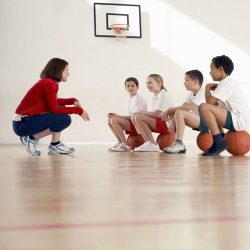Imagine a student’s mindset when he enter a physical education class and the activities planned are too challenging or even doesn’t match their interests. They are afraid to attend the class and over time and even start to skip the classes. This is why flexibility in physical education plan is really important. Every year there are many of the students who faces these kinds of situation. However, this also highlights a huge problem in traditional physical education. Flexibility of physical education is something that aims to solve this problem. Apart from that, it is also important to create a system where students having different abilities, interests, comfort can come together to attend the class. Implementing flexibility in physical education class is engaging, enjoyable and beneficial for everyone. Lets get to explore how flexible physical education plan helps students to achieve better outcomes and build a strong foundation for lifelong health and wellness.

What do you mean by flexibility in physical education?
Physical education is a crucial subject and it is not one-size-fits-all. Students have different abilities, fitness levels and personal preferences. For instance, some of the students would love running while other must be enjoying doing yoga activities. When you don’t have flexibility in the subject plan it would make students to feel left out or discouraged. This can directly impact their confidence and participation.
Flexible learning in physical education offers students to choose the activities that aligns with their strength and interests. Apart from that it gives them the opportunity to explore different forms of physical activities which makes them more likely to engage and succeed.
How Does Flexibility Benefit Students?
Here are some of the ways through which flexible physical education enhances the student contribution in physical education classes:
a- Improved confidence
When students participate in different activities during class they enjoy and feel capable of doing. This adds up to their confident. For example- a student who can’t do much in running can excel in swimming or dancing. Flexibility uncover their potential and boost self esteem.
b- Better physical health
One of the benefits of flexibility in physical education that it offers different choices to the students. Students are offered aerobics, martial arts or outdoor sports through which they can choose what they enjoy most. When they start to participate regularly, it improves their physical fitness, stronger muscles and better endurance as well.
c- Enhanced mental well-being
Physical education is just not limited to body but it also impacts mind. There are activities that are tailored as per student’s preferences can help to reduce the stress and anxiety. For example- mindfulness based exercises such as yoga which helps to promote relaxation and focus.
d- Encourage teamwork and social skills
Flexible physical education programs are designed by focusing on group activities or team based challenges. These are the activities that promotes value of collaboration, communication and student support one another. These activities are really helpful to shape their moral and social values.
Ways to bring flexibility to physical education
It is not a difficult task to create a flexible education program but it requires thoughtful planning. Here are some of the simple strategies:
1- Offer variety: rather than sticking to a fixed schedule, offer students with different options. For example- students must have options of volleyball, yoga, or individual fitness on any specific day. This gives them the freedom to choose which makes them more involved and motivated.
2- Personalised goals: every student is unique and so must be their fitness goals. This is why it is important for teachers to guide students to create achievable targets as per their abilities. They can choose to run a specific distance or master a skill or personalized goals inspire growth and preservance.
3- Create inclusive activities: this flexibility would ensure that no students feel left out. inclusive games and activities such as modified basketball or cooperative challenges allow students of different abilities to participate. This builds a sense of community and mutual respect as well.
4- Use technology: when you incorporate apps or online tools, it can make their physical education class more engaging. For instance, we can take student’s example who loves to track his progress, watch instrumental videos or even challenge friend to virtual fitness contests. However, technology adds more enthusiasm and fun to physical education learning.
5- Encourage feedback: you can even take a step forward to ask students about their opinions and ideas for physical education program. What are the activities that they enjoy? What changes would they want to make their class more comfortable? Listening to their concern would make this class more engaging and student-centered environment.
Flexibility in physical education is not just a plan but it’s a necessity. However, it ensures that every student feels included, supported and motivated to participate. When you offer them choices, personalised goals and promote creativity, this empowers them to achieve their best and develop lifelong habits of staying active.
faqs
What is the meaning of definition of flexibility?
Ans- flexibility simply means to adapt or bend without breaking. In simple terms, we can understand it as the range of motion of muscles and joints. In broader terms, it shows the capacity to adjust to changes, challenges or different conditions effectively.
What is flexible in your own words?
Ans- being flexible simply means to adjust or change easily when faced with challenges or new situations. It is like being adaptable and open minded, whether physically, mentally or in life as well. Not only this, but flexibility also helps to stay balanced and thrive in diverse environments or circumstances.
